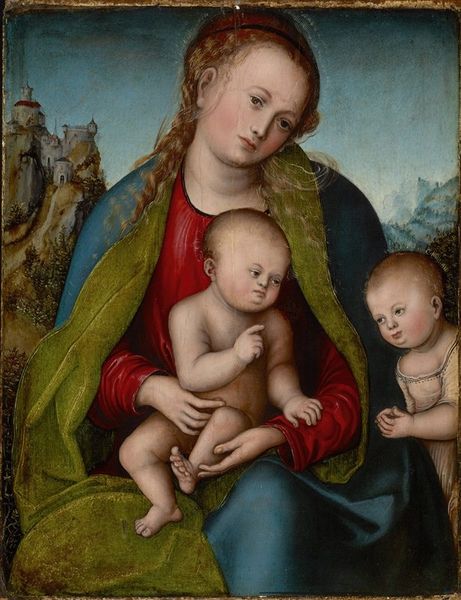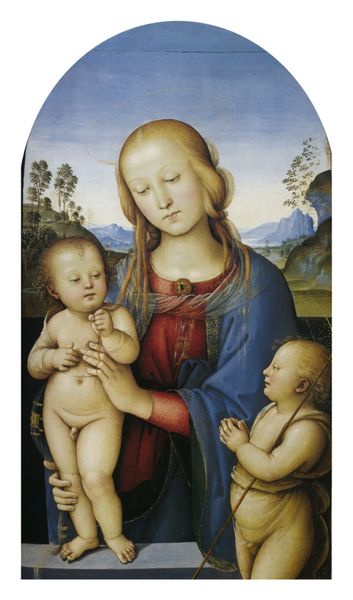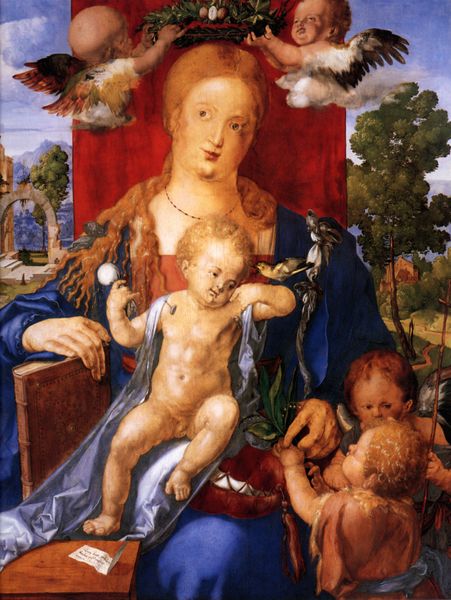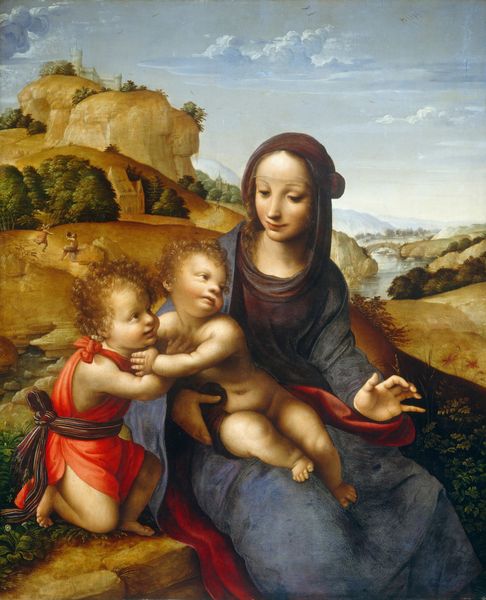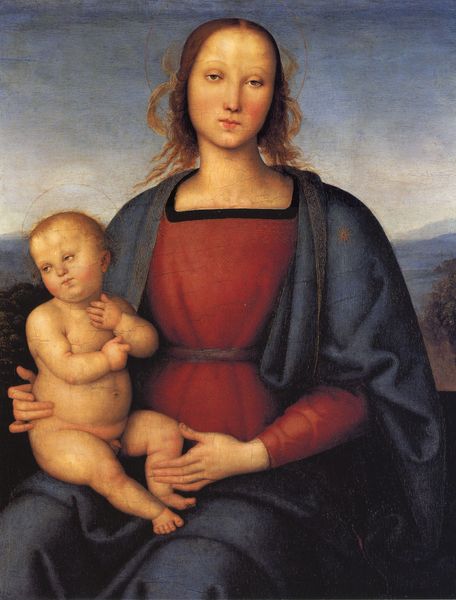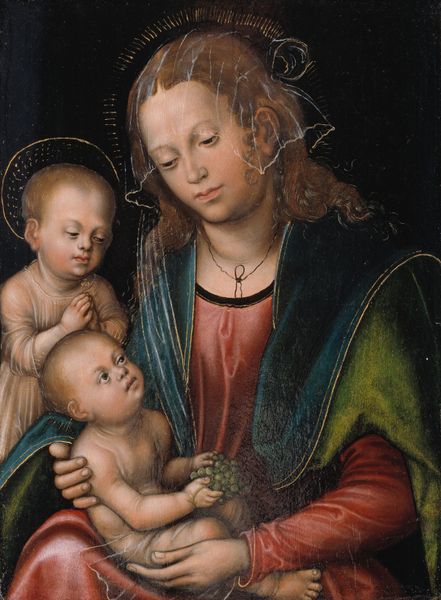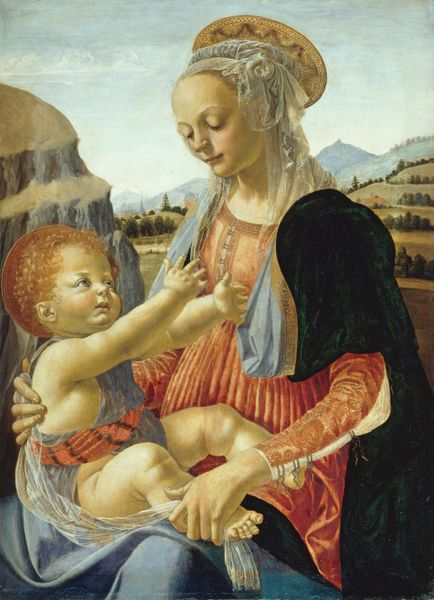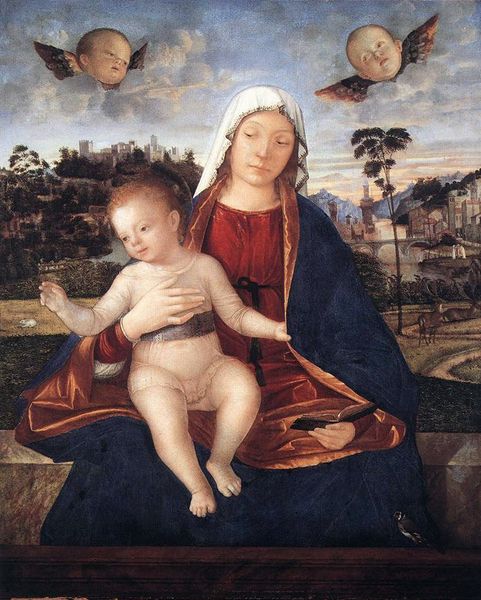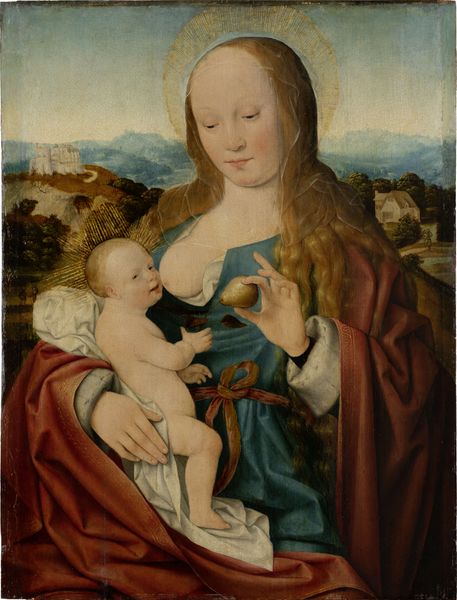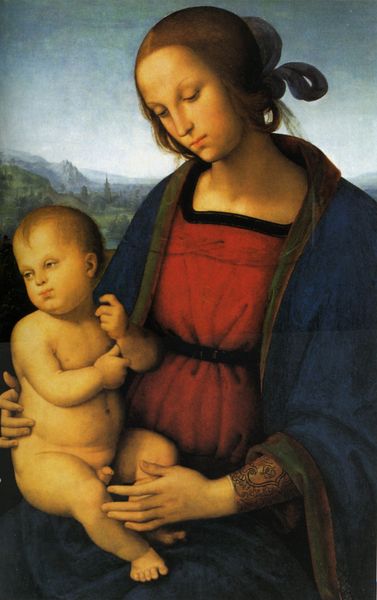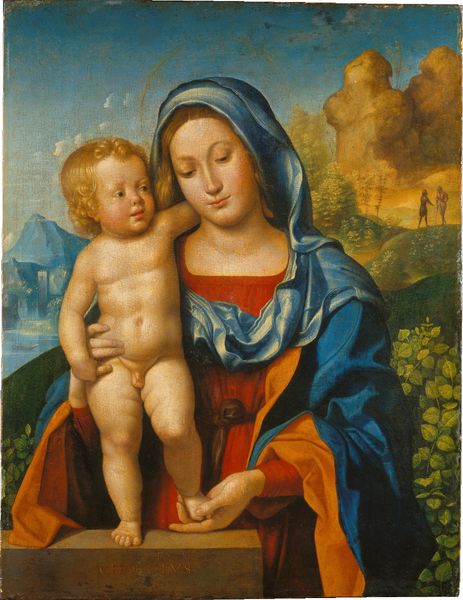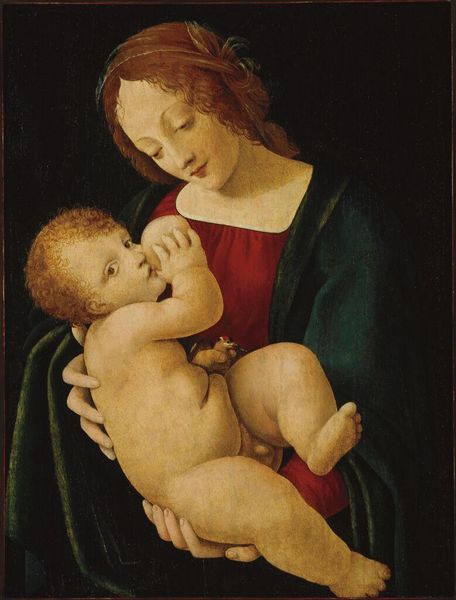
tempera, painting, oil-paint
#
portrait
#
tempera
#
painting
#
oil-paint
#
figuration
#
11_renaissance
#
madonna
#
history-painting
#
northern-renaissance
Copyright: Public domain
Editor: So, this is Lucas Cranach the Elder's "Madonna," painted in 1514 using tempera and oil paint. The figures have this intense seriousness to them, almost stern. I am also intrigued by the setting. What symbols are at play here? Curator: This "Madonna" is fascinating, isn't it? It exists within a Northern Renaissance tradition, but Cranach infuses it with distinct symbolism. The Madonna herself, though presented in a seemingly naturalistic landscape, carries the weight of centuries of iconography. Look at the child to her left. See his gesture? Editor: Yes! He seems to be raising a finger. Curator: Indeed. That upward pointing index finger, typically belonging to John the Baptist as an infant in these iconographic renderings, speaks volumes. It alludes to John's future role as the herald of Christ, a direct line to the divine. Consider also the way that both children's gazes avert ours and meet elsewhere, as if each contemplates something deeper that evades the viewer. Editor: Is that what the background landscape could refer to as well? It looks so...brooding. Curator: Precisely. Cranach moves away from the idyllic settings often associated with the Madonna. There is an almost haunted quality here. This could evoke the impending sacrifices in the future, or perhaps even comment on anxieties of the era. These were turbulent times. Do you see how these details converge? Editor: Now I see it. He has combined religious figures, nature, and the contemporary anxieties of the 16th century to build a new symbolic arrangement of the "Madonna." Thank you for pointing this out. I would never have considered such complex factors in one piece. Curator: And I would never have had the words to describe them, if you had not encouraged me to do so!
Comments
No comments
Be the first to comment and join the conversation on the ultimate creative platform.
